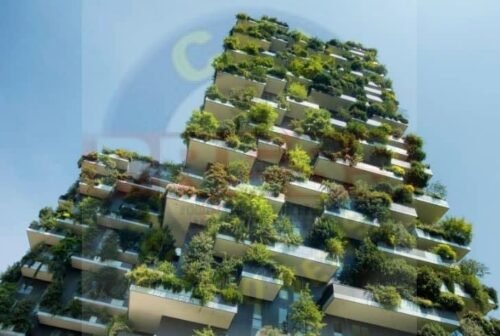CONCEPTS OF GREEN BUILDING
Green building is an approach to designing and constructing buildings that minimize their environmental impact while maximizing their efficiency, comfort, and health benefits. It is a way of reducing the use of resources and promoting sustainable practices in construction and maintenance. The following are some of the concepts of green building that are important to understand:
- Energy Efficiency: One of the primary objectives of green building is to reduce the amount of energy used in a building. This can be achieved through the use of energy-efficient building materials, appliances, lighting systems, and HVAC systems. Buildings designed for energy efficiency can save up to 30% of energy costs compared to traditional buildings.
- Water Conservation: Green building focuses on conserving water by using low-flow fixtures, efficient irrigation systems, and rainwater harvesting. Water conservation is crucial as it helps reduce the demand on municipal water supply systems and can lower water bills for building occupants.
- Sustainable Materials: The use of sustainable materials is another critical concept of green building. Sustainable materials are those that have a minimal impact on the environment, from their production to disposal. Examples include recycled content materials, rapidly renewable materials, and materials with low volatile organic compounds (VOCs).
- Indoor Air Quality: Green building takes into account the importance of indoor air quality by using materials that emit low levels of VOCs and improving ventilation systems. Good indoor air quality has a direct impact on the health and comfort of building occupants.
- Site Sustainability: Green building looks at the sustainability of the site where a building is constructed. It considers factors such as the availability of public transportation, the impact on local ecosystems, and the use of green spaces. Building in a sustainable location reduces the environmental impact of construction and increases the quality of life for building occupants.
- Waste Reduction: Green building promotes the reduction of waste during construction and operation. This can be achieved through the use of recyclable materials, waste reduction strategies, and the implementation of recycling programs.
- Renewable Energy: Green building promotes the use of renewable energy sources such as solar, wind, and geothermal energy to power buildings. The use of renewable energy reduces the carbon footprint of a building and lowers energy costs over time.
In conclusion, green building is a holistic approach to sustainable construction that considers environmental, social, and economic factors. It aims to minimize the impact of buildings on the environment while maximizing their efficiency and promoting the health and well-being of building occupants. The concepts of energy efficiency, water conservation, sustainable materials, indoor air quality, site sustainability, waste reduction, and renewable energy are key to achieving the goals of green building.
The concepts of green building have numerous benefits, which include:
- Energy Efficiency:
- Reduced energy consumption and costs
- Lower greenhouse gas emissions and carbon footprint
- Increased comfort and productivity for building occupants
- Water Conservation:
- Reduced water consumption and costs
- Reduced demand on municipal water supply systems
- Increased resilience to water scarcity and drought
- Sustainable Materials:
- Reduced environmental impact from production to disposal
- Improved indoor air quality
- Increased durability and longevity of building materials
- Indoor Air Quality:
- Improved health and comfort for building occupants
- Reduced exposure to pollutants and toxins
- Increased productivity and concentration
- Site Sustainability:
- Reduced environmental impact of construction and operation
- Improved access to public transportation and amenities
- Increased property values and community engagement
- Waste Reduction:
- Reduced landfill waste and associated costs
- Increased recycling and composting rates
- Improved resource efficiency and environmental stewardship
- Renewable Energy:
- Reduced reliance on fossil fuels and non-renewable energy sources
- Increased energy independence and resilience
- Reduced carbon footprint and greenhouse gas emissions
In summary, the concepts of green building offer numerous benefits for building owners, occupants, and the environment. They promote energy efficiency, water conservation, sustainable materials, indoor air quality, site sustainability, waste reduction, and renewable energy, which ultimately lead to healthier, more comfortable, and more sustainable built environments.


